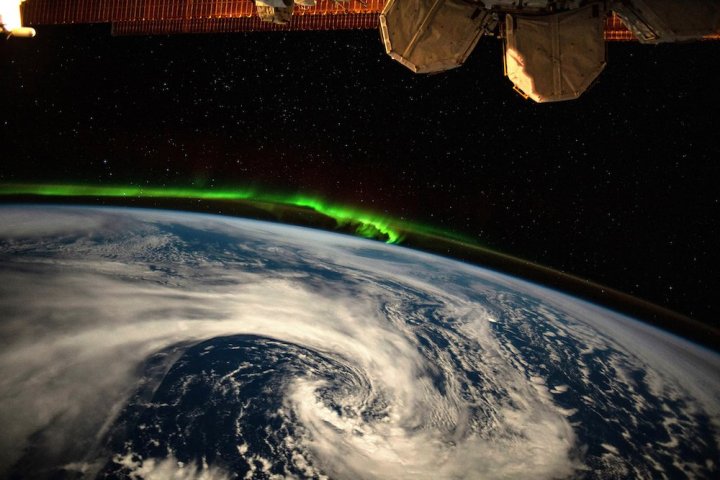Italian astronaut Samantha Cristoforetti has posted an astonishing image of Earth that she captured recently from the International Space Station (ISS).

While we’ve been treated to plenty of gorgeous Earth shots taken from the space station’s seven-window Cupola observatory over the years, few of the images show our planet illuminated by moonlight. Even better, Cristoforetti’s picture also features an aurora, a dramatic swirl of cloud 250 miles below, an abundance of distant stars, and even part of the space station.
Cristoforetti, who arrived at the ISS in April for a six-month stay, shared the beautiful image with her one million followers on Twitter on Tuesday, August 16.
“In those bright nights around the full moon you can see features on the planet surface even at night,” she said in the tweet. “From the Cupola the view is ‘upside down’ — flying above clouds feels like looking up at the sky from Earth. Cloud gazing and stargazing at the same time!”
Cristoforetti’s post was accompanied by a tweet from space enthusiast Huub Eggen, who had rotated the picture to show Earth from a more familiar angle.
In those bright nights around the full Moon you can see features on the planet surface even at night. From the Cupola the view is “upside down” – flying above clouds feels like looking up at the sky from Earth. Cloud gazing and stargazing at the same time! https://t.co/NyB2TQ7oIu pic.twitter.com/i7eXdO4RtE
— Samantha Cristoforetti (@AstroSamantha) August 16, 2022
“Curls of nature in this image from a time lapse taken by @AstroSamantha from ISS on 10Aug2022 over the southern Indian Ocean (-44.6 83.4). Low pressure area and aurora,” Eggen wrote in his tweet.
The space station travels around Earth at a zippy 17,000 mph, resulting in an orbit every 90 minutes or so. That means that if an astronaut spent an entire day gazing out of the Cupola, they’d witness 16 sunrises and 16 sunsets, though with full moons only happening once a month, few of the nightscapes will be as gorgeous as this one.
For more amazing Earth shots, take a moment to marvel at these wonderful images compiled to celebrate this year’s Earth Day back in April.


